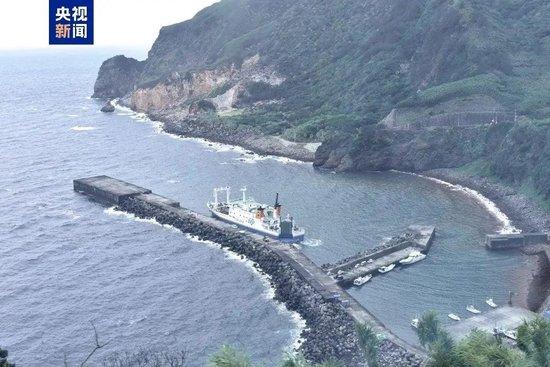


According to a report by Japan Broadcasting Corporation (NHK) on the 5th, multiple earthquakes occurred in the Ryukyu region of Japan that day.
The report quoted a notice released by the Japan Meteorological Agency at dawn on the 5th stating that from midnight until the time of the announcement, there had been multiple earthquakes in the Ryukyu region, with seven being magnitude 3 or higher and one reaching 5.3. From June 21st to 11:00 AM on July 5th, there were 1,329 earthquakes with intensity level 1 or above.
Due to rumors that a “catastrophic earthquake will occur in Japan on July 5th,” spreading rapidly online, as well as rumors suggesting that an earthquake near Ryukyu would trigger a nationwide earthquake, the earthquake in Ryukyu on the 5th caused many people to feel uneasy.
In response, the Japan Meteorological Agency held another emergency press conference at 8:30 AM on the 5th, where a spokesperson emphasized that there was “no causal relationship” between the earthquake in Ryukyu on the 5th and the rumors.
A screenshot from the video of the Japan Meteorological Agency’s press conference.
250,000 people waited for the earthquake live stream at 4 AM, but it didn’t happen: No earthquake
Japanese media reported that at 4 AM local time on the 5th,
a YouTube live broadcast for the national emergency earthquake alert attracted nearly 250,000 viewers’ real-time attention, waiting to see if the so-called “earthquake prediction” would come true.
However, by 1 PM local time on the 5th, the rumored “catastrophic earthquake” did not occur.
The Japan Meteorological Agency held a press conference at 8:30 AM that morning, once again emphasizing that the “big earthquake on July 5th” is merely a rumor, earthquakes cannot be precisely predicted, and calling on the public to return to reason.
This prediction of a big earthquake originated from the Japanese comic book artist Ryoko Nagai’s 1999 manga “The Future I See.” In the book, she dreamt of ”
At 4:18 AM on July 5th, 2025, an explosion underwater in the Philippine Sea would trigger a hundred-meter tsunami, swallowing one-third of Japan’s territory.”
Due to the book’s vague mention of “the Great Disaster of March 2011,” which coincided with the Tohoku earthquake, some netizens took it as a “divine prophecy,” leading to widespread dissemination of the prediction on July 5th.
However, in her new book “The Revelation of Angels” published in June 2025, Ryuko Kurosawa clarified: ”
July 5th was merely the date recorded in dreams, not the day of the disaster.
” She emphasized that the content of the book was manipulated and hyped by the publisher, adding specific dates not their intention.
Japanese officials and the scientific community have repeatedly debunked these predictions. The Director-General of Japan’s Meteorological Agency, Nobuyuki Inagaki, has repeatedly refuted the prophecy, stating it “has no scientific basis” and pointing out that current technology can only predict earthquakes (within dozens of seconds) or assess long-term probability (such as the future 30 years’ strong earthquake probability for the South China Sea Seamount at 80%) but cannot accurately predict specific dates.
Robert Galle, a retired professor at Tokyo University, also stressed: “Using scientific methods to predict the exact time, location, and magnitude of an earthquake is currently impossible.” Geological data shows that
the thousands of tremors felt in Kumamoto recently were normal plate activity, unrelated to precursors of major earthquakes.
Rumors continue to spread: Tourism industry suffers, public panic leads to mass evacuations
Despite official denials, panic continues to spread across Japan and globally. Some people have fled due to fear, causing cancellation rates for travel groups to Japan to reach up to 80%, airlines to reduce flights to Japan, and routes to popular destinations like Kumamoto and熊本 to be significantly reduced. The World Expo in Osaka is expected to see a sharp decrease in visitor numbers.
In Japan, supermarkets have seen a surge in panic buying, with anti-disaster kit sales soaring by 300%. There are abnormal crowds at Haneda Airport, and the website of the Japan Meteorological Agency experienced a crash due to increased traffic. Even some temples have launched services for “afterlife reservations.”
In some affected areas, residents have begun taking proactive actions.
On July 3rd, Shido Village in Kagoshima Prefecture initiated an off-island evacuation plan, with the first batch of 13 residents evacuated in the early hours of July 4th.
Source: Global Times, News
Is Japan facing a devastating earthquake today?